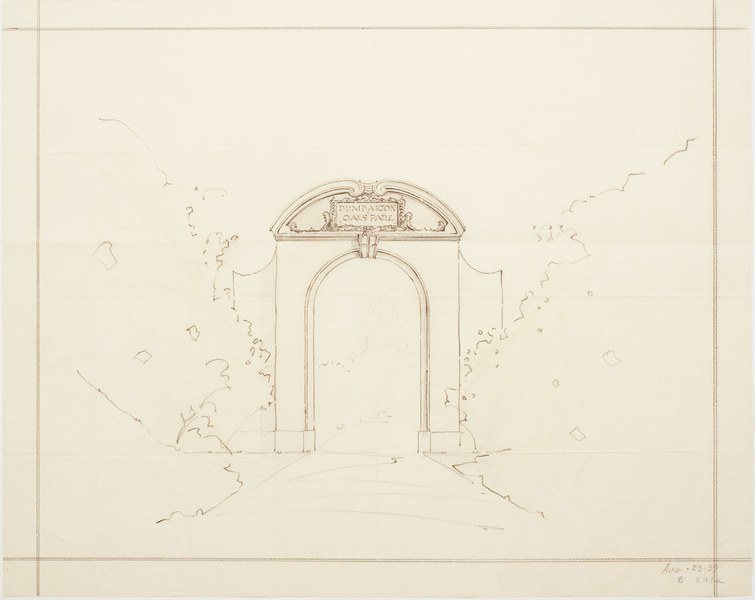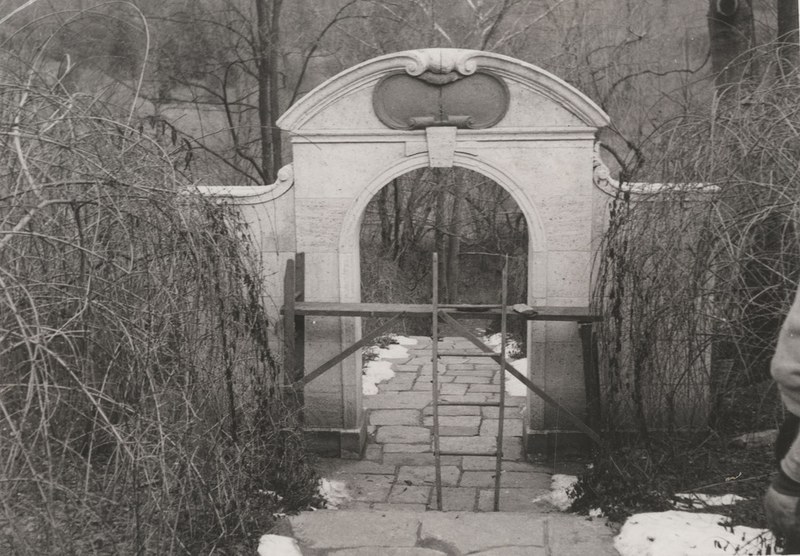
The separation of the formal Dumbarton Oaks Gardens from the designed wilderness of the park was not necessary until the Blisses donated their estate in 1940 to Harvard and the park land to the National Park Service. A year prior, Farrand designed a gate at the bottom of Forsythia Dell marking a formal border between the gardens and the Park. Constructed from limestone and iron, “Dumbarton Oaks Park” is inscribed on its south face, while “Dumbarton Oaks” is inscribed on the north face. The gate, located at the foot of the stone steps running up the Dell, would likely have been the main entry point from Dumbarton Oaks into the Woodland, while the Lovers’ Lane Gate, which today serves as the entrance to the Park, was likely used as a service entrance during the Blisses’ tenure. The original iron gate was reconstructed in 2000, with slight modifications to the design, by Ken Zastrow of Copper Heron Forge.


Image: Joe Mills, 2009


